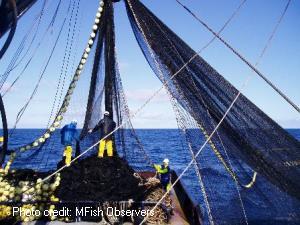Key statistics
| High |
| High |
| High |
|
|
|
| 1 Reported commercial catch is calculated for the 12 month period to 30/09/2026 |
|
| 2 Quota value and exports are calculated pro-rata to reported commercial catch for the 12 month period to 30/09/2026 |
Related links
Opportunities and challenges
- Managing bycatch of juvenile bigeye and yellowfin tuna in the tropical purse seine fishery
- Managing any tensions between commerical and recreational fishers that may arise from time to time
- Assessing the role skipjack plays in marine ecosystems
The western and central Pacific Ocean supports the largest tuna fishery in the world by volume. A large portion of this catch comes from purse seine fisheries for skipjack tuna.
New Zealand’s fisheries for skipjack can be divided into two main components: a tropical component that operates throughout the year in equatorial waters, and a subtropical component that extends seasonally into New Zealand fisheries waters. The latter component is fished by both commercial and non-commercial fishers.
Skipjack is sought by recreational fishers and of interest to gamefishers as the presence of skipjack schools is associated with billfish. Maori traditionally fished in both nearshore and offshore locations, and had fishing equipment that would have been well suited to fishing for tunas.
